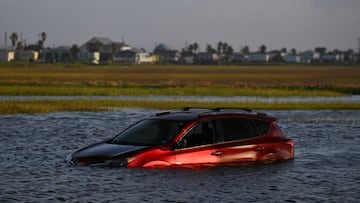What is a storm surge and how far can it come inland?
This phenomenon is one of the most dangerous aspects of hurricanes and tropical storms, causing more damage and loss of life than high winds or rainfall.


Hurricane Milton is expected to bring a huge storm surge much larger than Hurricane Helene last week.
This natural occurrence is characterised by an abnormal rise in sea level that accompanies a storm as it moves toward land. Combined with high tides, the surge led to the inundation of beaches and coastal communities, including Surfside Beach.
Milton’s size is so vast that Tampa’s record surge of 7.6ft just last week will be doubled by Milton to 15 ft. This video shows what this will look like in practice.
The Tampa area is facing a potential 15-foot storm surge with Hurricane Milton. Here's video of a similar surge in Ft Myers during Hurricane Ian.
— Mark Elliott (@markmobility) October 8, 2024
Terrifying.pic.twitter.com/4ppSSM599q
How storm surges are formed
Storm surges are the combination of strong winds and low atmospheric pressure associated with intense storms. As a cyclone approaches land, its powerful winds push water towards the shore, causing it to accumulate and rise above normal tide levels. The low pressure at the storm’s center also contributes by allowing the water to bulge upward, further increasing the surge height.
Several factors influence the severity of a storm surge:
- Wind speed and direction
- Storm size and intensity
- Forward speed of the storm
- Coastal topography and bathymetry
- Timing of astronomical tides
Related stories
Storm surges can reach heights of up to 10 meters (33 feet) in extreme cases, especially when coinciding with high tide. The impact of these surges extends beyond immediate coastal areas, potentially affecting regions hundreds of miles from the storm’s center.
The consequences of storm surges are devastating. They can cause rapid flooding, damage to infrastructure, and create hazardous conditions for residents.

